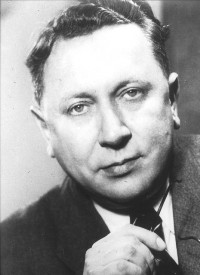- Kurt Alder
Infobox_Scientist
name = Kurt Alder
image_size = 180px
birth_date = 10 July 1902
birth_place =Königshütte ,Germany
nationality =Germany
death_date = death date and age|df=yes|1958|6|20|1902|7|10
death_place =Cologne ,Germany
field =Organic chemistry
work_institution = I G Farben Industrie,University of Cologne
alma_mater =University of Berlin University of Kiel
known_for =Diels-Alder reaction
prizes =Nobel Prize for Chemistry (1950)Kurt Alder (10 July 1902 – 20 June 1958) was a German chemist and
Nobel laureate .Biography
Alder was born in the industrial area of
Königshütte (Chorzów ),Upper Silesia , where he received his early schooling. Forced to leave the area for political reasons (that part of Germany became a part ofPoland ) after the First World War, he studied chemistry at theUniversity of Berlin from 1922, and later at theUniversity of Kiel where his PhD was awarded in 1926 for work supervised by Diels.In 1930 Alder was appointed reader for chemistry at Kiel, and promoted to lecturer in 1934. In 1936 he left Kiel to join I G Farben Industrie at
Leverkusen , where he worked on synthetic rubber. Then in 1940 he was appointed Professor of Experimental Chemistry and Chemical Technology at theUniversity of Cologne and Director of the Institute of Chemistry there. Throughout this time and despite the many obstacles to original research in Europe at the time, he continued a systematic program of investigations of his particular interests in the synthesis of organic compounds. In all he published more than 151 papers in this field.Alder received several honorary degrees and other awards, most famously the 1950 Nobel Prize in Chemistry which he shared with his teacher Diels for their work on what is now known as the
Diels-Alder reaction . The lunar crater Alder is named in his honour.References
*
*External links
* [http://www.nobel.se/chemistry/laureates/1950/alder-bio.html Nobel Prize biography]
Wikimedia Foundation. 2010.
